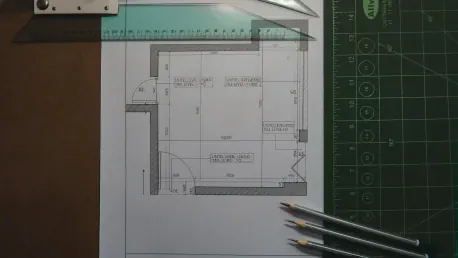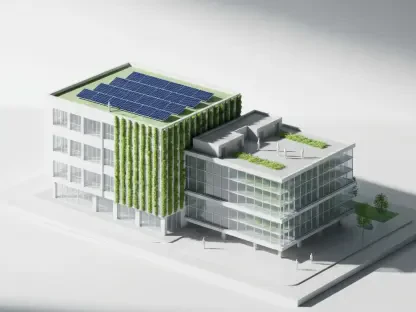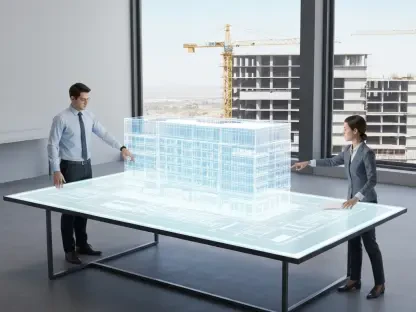The construction industry is continually evolving, with new methodologies being developed to address longstanding inefficiencies. One such method, the design-build project delivery approach, is emerging as a leader in driving efficiency and cost-effectiveness. The design-build approach encompasses a collaborative methodology that involves merging design and construction services into a single, cohesive process. This article will dive into the specifics of design-build and explore its impact on modern construction practices.
Growth and Efficiency of Design-Build
Design-build is the fastest-growing project delivery method in the U.S., outperforming traditional models such as design-bid-build. Studies by FMI Corporation indicate that design-build will lead to over $2.6 trillion in construction spending from 2024 to 2028, accounting for nearly half of all construction projects. These figures highlight its increasing adoption and the industry’s recognition of its benefits.
By outperforming traditional methods in both cost and schedule performance, design-build demonstrates its potential to transform the construction landscape. The method’s ability to deliver projects faster and more efficiently is pivotal at a time when the demand for construction is soaring. The urgency to meet tight timelines and budgets makes design-build a crucial tool in the modern construction arsenal.
Design-build thrives on its ability to integrate various phases of construction, reducing redundancies and expediting the workflow. This integration results in a streamlined process that translates to significant time and cost savings. The evidence of its efficiency, backed by studies and real-world applications, has propelled design-build to the forefront of the construction industry, making it an increasingly preferred choice for modern projects.
The Collaborative Edge
At the heart of design-build is a collaborative approach that brings together all project stakeholders from the outset. This involvement ensures that the design development phase aligns with the owner’s project goals. Such collaboration eliminates rigid prescriptive specifications and fosters inclusive decision-making.
Design-build’s collaborative nature allows for effective communication and alignment among all parties involved, providing flexibility for owners to determine their level of participation. This flexibility represents a significant departure from the siloed approach seen in conventional models, ensuring better project outcomes. The hands-on involvement of owners ensures that their vision is maintained throughout the project, leading to results that meet or exceed their expectations.
The collaborative environment also contributes to enhanced problem-solving and innovation. With all stakeholders engaged from the beginning, potential challenges can be identified and addressed proactively. This collaborative ethos promotes teamwork and cultivates a culture of shared responsibility, leading to more innovative solutions and ultimately more successful projects.
Addressing Risk Allocation
One prevalent misconception about design-build is that it unjustly shifts the entire risk to the design-builder. In reality, the method promotes strategic risk allocation where risks are assigned to the party best equipped to manage them. Proper risk management is essential in construction, given the potential uncertainties and complexities inherent in projects.
By following DBIA Best Practices, design-build encourages proactive risk management. This approach helps in identifying significant project-specific risks early on and addresses them in the contract, thereby reducing inefficiencies and disputes. The allocation of risk to the party best suited to handle it not only ensures smoother project execution but also fosters trust and accountability among stakeholders.
Strategic risk allocation minimizes conflicts and misunderstandings, leading to more predictable and stable project outcomes. This risk management strategy represents a clear advantage over traditional project delivery methods, where risk allocation can often be vague and lead to contentious disputes. By clearly defining responsibilities and expectations, design-build sets the stage for more harmonious and productive project environments.
Efficient Procurement Process
Another misconception is related to the design-build procurement process. Critics argue that the two-step procurement process is time-consuming. However, data shows that this method ultimately saves time by minimizing the need for costly change orders and allowing for phases of design and construction to overlap. The efficiency of the procurement process is a testament to the thorough planning and enhanced coordination that design-build entails.
Supporting this view, a CII/Pankow study revealed that design-build projects are completed significantly faster than those using traditional methods. The streamlined decision-making and efficiency gained from the design-build procurement process contribute to quicker project deliveries. The holistic nature of design-build ensures that potential issues are foreseen and addressed, reducing delays and interruptions.
By overlapping design and construction phases, design-build allows for a dynamic and responsive project flow. This overlap reduces downtime and accelerates progress, ensuring that projects are completed on or ahead of schedule. The efficient procurement process of design-build, therefore, not only saves time but also enhances the overall quality and cohesion of the project.
Progressive Design-Build (PDB)
Progressive Design-Build (PDB) is a rewarding variation within the design-build framework. It offers a phased and collaborative approach, facilitating continuous engagement between owners and design-build teams. This model allows for real-time cost estimating, iterative design refinement, and enhanced risk management. PDB’s dynamic nature makes it especially effective for complex projects where adaptability and continuous communication are critical.
PDB’s structured approach ensures continuous scope, schedule, and cost refinement, resulting in optimal project outcomes. Stipends, often associated with PDB, are used to encourage competition and foster innovation. The use of stipends ensures that teams remain motivated to deliver their best work, leading to high-quality outcomes that push the boundaries of innovation.
The continuous engagement between owners and design-build teams in PDB fosters a deeper understanding of project objectives and constraints. This ongoing dialogue ensures that adjustments can be made in real-time, adapting to new information and shifting priorities. Thus, PDB not only enhances project delivery but also promotes a culture of ongoing improvement and responsiveness to change.
Advancing the Industry
The construction industry is constantly changing, with innovative methods being developed to tackle enduring inefficiencies. One such innovative approach is the design-build project delivery method, which is fast becoming a frontrunner in enhancing efficiency and cost savings. The design-build method involves a collaborative process where design and construction services are integrated into a single, seamless workflow. By uniting these two critical phases, the design-build method minimizes the potential for miscommunication and streamlines project completion. This article delves into the intricacies of the design-build approach and its significant influence on contemporary construction practices. It examines how this methodology not only fosters better collaboration among stakeholders but also reduces timelines and lowers costs. As the construction industry continues to evolve, the design-build approach stands out as a transformative strategy that addresses long-standing challenges and sets new benchmarks for efficiency and productivity.









